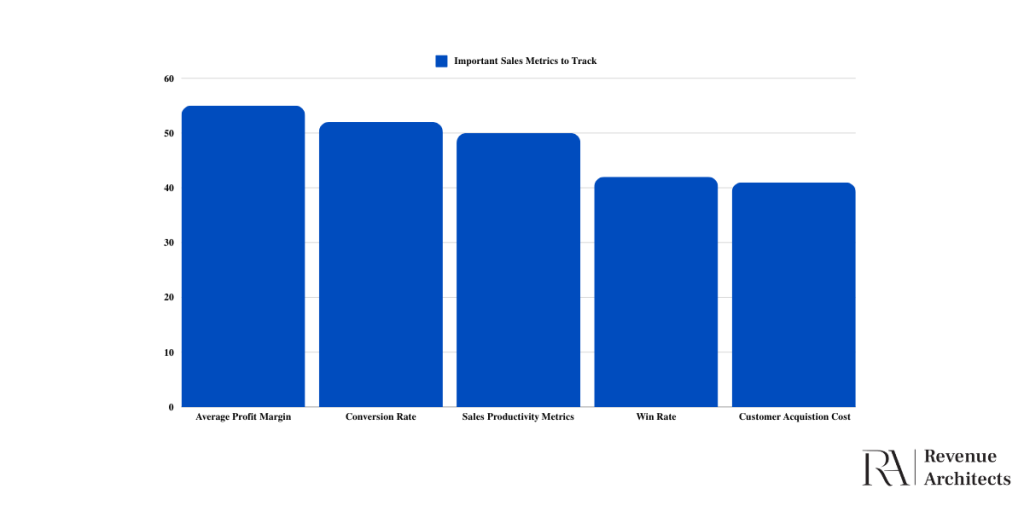Sales tracking is not just a process; it’s a strategic tool that allows for a detailed analysis of each stage. This in-depth understanding paves the way for proposing improvements, executing new ideas, and betting on business development, making the entire process much more straightforward and rewarding.
The sales tracking process is not just about numbers, it’s about people. It allows potential customers to be classified based on their interests and identifies the stage of their sales funnel. This information is not just crucial, it’s the lifeline for maintaining effective contact with commercial prospects.
Thus, this technique focuses on the specific needs of potential customers to provide them with the best possible experience. This results in an increase in customers and a higher number of conversions.
Below, we provide all the details you need to consider to start a sales tracking system and explain how to create your own system.
Why Track Sales?
Did you know that 86% of buyers are willing to pay more for a great customer experience? Understanding customer priorities through sales tracking is empowering for a commercial team focused on achieving maximum profitability. It allows you to design personalized strategies adapted to their specific needs, giving you a sense of control and confidence in your approach.
A sales tracking plan not only helps you understand customer priorities but also detects any anomalies in the commercial cycle. By correcting them before they become a problem, you will achieve the objectives set out in the sales plan, fostering a sense of achievement and driving you towards further success.
Here are some reasons why you should establish a sales tracking system for your business:
- Optimize the Analysis Process: Sales tracking helps to evaluate the commercial process constantly. This way, you can identify which stages are most important to the customer and which are not. You’ll learn in which phases you need to make some improvements to increase the efficiency of the sales cycle.
- Improve the Customer Experience: A sales tracking plan should respond quickly to any doubts or concerns from customers. Their positive experience will generate an implicit commitment to your product or service.
- Boost Customer Loyalty: We must remember our customers once the purchase is made. We must continue working on the relationship after completing the transaction. This commercial follow-up fosters their loyalty to your brand. You’ll ensure repeat purchases and recommendations of your products or services.
- Collect Key Data to Improve Results: Establishing a sales process is excellent for gathering fundamental data to help you understand your customers and improve their interactions. This valuable information allows you to anticipate their needs. You’ll better understand their behaviour, which will help you achieve new conversions in the future.
- Identify Business Opportunities: A well-designed sales tracking system quickly identifies any commercial opportunity. Thus, you can offer specific or individual promotions to your prospects.
- Encourage Closing Sales: A sale usually requires several contacts with the potential customer. Therefore, sales tracking allows for maintaining the frequency of these contacts and keeping their interest throughout the cycle.
- Increase Competitiveness: Companies that bet on constant and efficient sales tracking are at the forefront. They want to know their customers’ interests. They make strategic decisions and, therefore, improve their commercial competitiveness.

How to Track Sales? Develop the Plan
Developing a sales tracking plan is not a vague concept. It’s a concrete roadmap for achieving commercial success. It provides highly valued aspects such as consistency, efficiency, and personalization of communications, guiding you every step of the way.
Additionally, it is critical to conduct subsequent analyses and measurements that drive continuous improvement.
These are the five steps you should consider when developing a sales tracking plan:
Step 1: Identify Your Target Audience
No one likes to waste their time, especially in the workplace. Therefore, the first step to establishing an effective commercial follow-up is identifying your target audience and how you can connect with their interests and needs.
Aspects such as defining if there is a majority of men or women, establishing an average age range, location, job position, etc., are vital data for the following steps of a successful sales tracking process.
Step 2: Outline Your Sales Tracking Process
The second step to performing efficient sales tracking is to outline it. That’s right; you need to design a personalized journey tailored to the needs of the customer and your own company.
When proposing the sales tracking process, it is essential to analyze your current customers. It is also convenient to identify the route they took before deciding to buy your product or service. This way, you will know which steps of your commercial strategy have been practical and which have yet to be noticed or even hindered the closing of a sale.
This data will help you choose the sales tracking format that best suits your customers’ interests and needs while fulfilling the commercial objectives of the team in charge.
Step 3: Establish KPIs
When applied to a sales tracking process, KPIs (Key Performance Indicators) are a series of metrics that help companies better understand the customer’s purchase journey.
Similarly, they allow the sales objectives previously determined by the company’s management to be specified. These performance indicators are vital for evaluating the chosen sales tracking system. They do this by quantifying the development and progress of the commercial team. This way, you can anticipate any irregularity in the sales tracking system and propose changes to improve the process.
Some of the most effective KPIs for designing your sales tracking process are the email open rate, the number of conversations or calls made by your sales team, the number of clicks on the content uploaded to the web, and the number of conversions. The average duration of the sales cycle is also a beneficial KPI.
However, we recommend you thoroughly analyze your customers’ interests and purchase journeys. This way, you can establish effective sales KPIs that refine sales tracking. Opt for primary indicators focused on critical objectives and secondary indicators for complementary aspects, ensuring consistent monitoring aimed at commercial success.
Step 4: Implement a CRM Solution
A CRM (Customer Relationship Management) is software designed to improve the management of any interaction between a company and its customers. It collects data, conversations, or orders from potential or current customers. With this information, strategies can be developed to optimize relationships with all consumers.
Implementing a CRM for sales process tracking centralizes all customer data in one place. This allows quick and easy access to key information, which is essential for efficiently carrying out commercial control.
As an added value, a sales CRM segments customers based on various aspects, such as the level of interest or the number of commercial contacts, facilitating the design of personalized strategies adapted to their specific needs.
Furthermore, a CRM solution’s technological capability enables the automation of critical tasks in sales tracking. These include sending follow-up emails and task reminders to contact potential customers. This automation implies significant time savings and a notable reduction in common errors in repetitive tasks.
Additionally, a Sales CRM helps track customers in the purchase funnel, offering beneficial data to predict conversion time and adjust commercial strategies.
Finally, a CRM solution improves internal communication among sales team members. Customer information is shared in the cloud, ensuring all team members know the details of interactions with customers and commercial prospects.
Step 5: Design Customer Interactions
A well-designed sales tracking plan includes organizing interactions with potential customers through phone calls, emails, or commercial visits. It will depend on their availability and interest in your products or services.
An example of the importance of this planning is the drafting of emails, which, in repeated situations over time, are created to increase interactions with the customer without investing more time than necessary. Creating easily adaptable templates is an excellent option in these cases.
Another example is periodically scheduling phone calls to your commercial prospects. This way, communication between seller and buyer will always remain open.

Examples of Emails You Can Send for Sales Tracking
Sales tracking is a process that requires coordinating specific responses to potential customers so they feel they are at the centre of your commercial strategy.
Below, we provide four examples of email templates that you can use to improve your sales tracking process. Please take advantage of them, personalize them, and achieve excellent results in less time.
Example 1: Follow up on the Last Email with a Commercial Proposal
Interruptions in communication from the potential customer are common. Therefore, it is practical to have a template that asks the prospect if they have reviewed your last email. If someone else is the right person to handle these matters, ask them to provide you with the appropriate contact to establish a fruitful conversation.
Subject: Have You Seen My Proposal from the Last Email?
Hi [Name], nice to greet you.
I am writing to check how you are and to ask if you have been able to analyze the proposal I made in the email I sent you on [include sending date].
As you know, we designed this proposal specifically for your company and are eager to hear your thoughts on it. We can implement this solution in a few weeks if it suits your needs.
Your company and our shared goal is to increase your profits and facilitate your work to achieve sales objectives.
If you think I should have this conversation with another team member who can spare a few minutes, I would greatly appreciate it if you contact them to discuss this proposal.
Thank you for your time and best regards.
[Signature]
Example 2: Follow-up After Opening an Email
It is common for a potential customer to open an email with a commercial proposal and wait to respond. You can use this template to remind your prospect that you are awaiting a response. This follow-up email aims to maintain communication and show your interest in tailoring the commercial proposal to their company’s interests and needs.
Subject: Do You Have Any Questions About My Previous Email?
Hi [Name], I am glad you opened my last email.
I would like to know if you have any questions I can resolve about the information I sent in the last email.
I would love to tell you more in a face-to-face or virtual meeting. I prefer we meet and share a coffee, but I can adapt to your availability. We can also have a phone call whenever you have a moment. You decide.
Thank you for your time, and we will stay in touch!
[Signature]
Example 3: Follow-up Email with a Free Tool
This template is designed to converse with leads who have shown some interest in your products or services in previous commercial contacts. Offering a free tool is an excellent way to test their genuine interest and deepen your understanding of their needs. This will allow you to formulate a commercial proposal that perfectly fits their interests in a later contact.
Subject: I Am Sending You This Free Tool to Get Ahead of Your Competition
Hi [Name], nice to greet you again.
Recently, we designed this tool for a leading company in your sector. We thought of yours so you could try it and tell us your thoughts.
Your opinion is very important to us since you have been working in this sector for [company’s age]. We know your work is respected by your competition and praised by your customers.
To use this tool, click here [link].
Once you have used it, I will contact you again to hear about your experience and what aspects we could improve to offer an even better product.
If you want to talk to me about anything you need, here is my schedule [include link] to arrange a meeting whenever you have a free moment.
Thank you for your time, and have a nice day!
[Signature]
Example 4: Follow-up Email from a Company with Tips
This template is designed to respond to prospects who have interacted with content on your sales page, for example, by downloading an ebook or attending a webinar. It also helps to forge a personalized commercial strategy and filter those leads whose interest is limited to the information in your online content without real intention to purchase your products or services.
Subject: Were the Resources on Our Website Useful for Your Business?
Hi, I am writing to you from [Your Company Name] to thank you for your interest in the content on our website, specifically [specific content name].
We would love to hear your opinion about this content and, above all, if it was helpful for your business.
Taking advantage of your contact, I researched [company name], and I am convinced that the following tips can help you improve your commercial results and increase your customer base.
[Add the tip] [Add the tip]
Have you considered implementing these techniques? If you want to know more about how we can help your business, we can have a meeting to delve into the topics that interest you the most.
Best regards, and thank you for your time.
[Signature]
Conduct Post-Sales Tracking
Closing a sale is the goal of any commercial strategy, but it is not the last step. On the contrary, conducting post-sales tracking is one of the best tools for retaining customers. This way, you can get recommendations for your products or services that open doors to future customers.
Post-sales tracking includes actions such as phone calls, emails, and surveys. Feedback is critical to increase overall satisfaction.
Additional resources for the customer, such as ebooks or invitations to specific training on your products or services, can be good hooks.
The first element to consider for post-sales tracking is to inform your customers that you will contact them after the purchase. In this first contact, you should ask about their customer experience and if they have any doubts or problems that you can solve before they become objections and lose customers.
Another objective of a post-sales tracking strategy is to obtain positive feedback from your customers, which you can ask them to rate your products or services. Remember that any information a customer offers about your brand, whether positive or negative, is very productive for improving your commercial strategy.
These opinions can become testimonials that reinforce confidence in your brand. Negative feedback is also valuable: it demonstrates your commitment to continuous improvement and can foster customer loyalty.
Lastly, remember that well-designed post-sales tracking allows for generating new purchases and is essential for identifying new business opportunities.
In Conclusion
Sales tracking isn’t just a necessary chore—it’s the backbone of any robust commercial strategy. By meticulously following up with potential and current customers, you gain invaluable insights into their journey, needs, and behaviours. This approach not only refines your sales process but also enhances customer satisfaction, fostering loyalty and encouraging repeat business.
You can transform data into actionable strategies that drive growth and competitiveness through systematic planning, identifying key metrics, leveraging CRM tools, and crafting personalized interactions. Keep your customers at the centre of your efforts, and you’ll see a notable boost in conversions and overall business success.
If you encounter challenges in creating effective sales tracking systems or optimizing your sales cycles, our expert sales coaches are here to help. Contact us today to learn how we can help you achieve your sales goals and drive sustainable growth.

